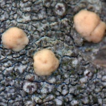
Photo from archive.org
Abstract Rhus chinensis represents a commercially and ecologically important tree species in China, but suffers from canker diseases in Jiangxi Province. Synnemata, pycnidia and ascomata were discovered on cankered tissues.… Click to show full abstract
Abstract Rhus chinensis represents a commercially and ecologically important tree species in China, but suffers from canker diseases in Jiangxi Province. Synnemata, pycnidia and ascomata were discovered on cankered tissues. Strains were obtained from single ascospore or conidium within the fruiting bodies and identified based on morphological comparison and the phylogenetic analyses of partial ITS, LSU, tef1 and rpb2 gene sequences. As a result, two species were confirmed to represent two kinds of synnemata. One of these species is described herein as Flavignomonia rhoigenagen. et sp. nov.; and Synnemasporella aculeans is illustrated showing ascomata, pycnidia and synnemata. Flavignomonia is distinguished from Synnemasporella by the colour of the synnematal tips. Additionally, Flavignomonia can be distinguished from the other gnomoniaceous genera by the formation of synnemata.
Journal Title: MycoKeys
Year Published: 2019
Link to full text (if available)
Share on Social Media: Sign Up to like & get
recommendations!